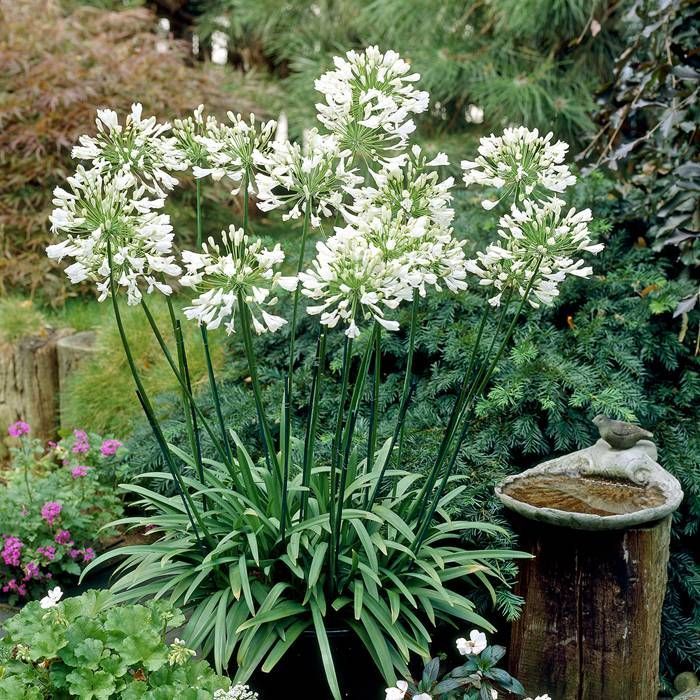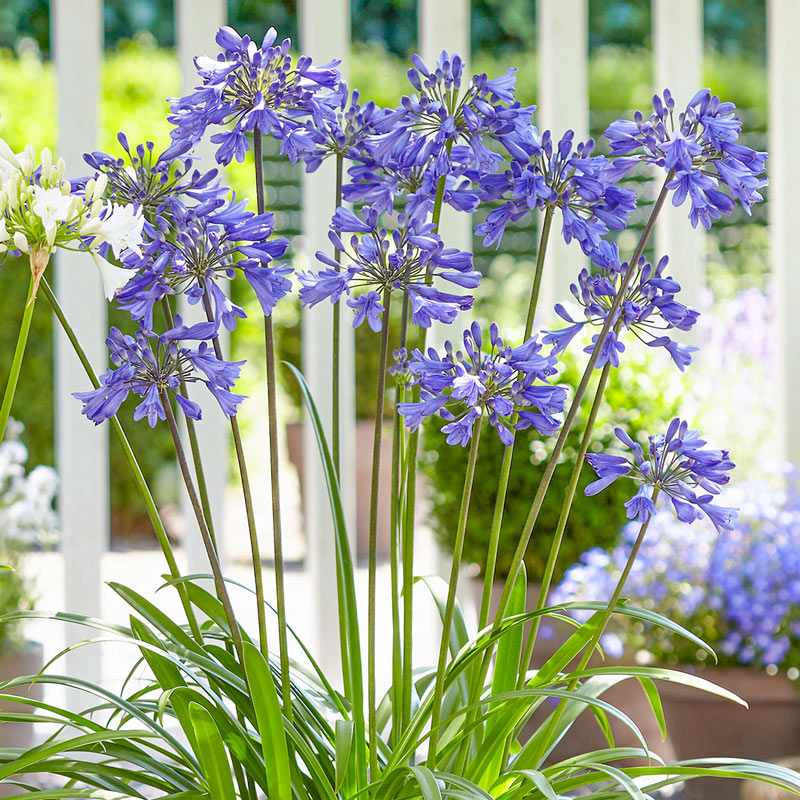Typical Agapanthus Problems and Just How to Address Them
Typical Agapanthus Problems and Just How to Address Them
Blog Article
Understanding the Art of Agapanthus Treatment: Essential Steps for Healthy Development and Vivid Blossoms
In the world of horticulture, the farming of agapanthus stands as a fulfilling venture for those who seek to support these sophisticated flowering plants. From selecting the right selection to grasping pruning techniques, the trip towards cultivating growing agapanthus plants is diverse and holds the essential to unlocking the complete potential of these organic treasures.

Picking the Right Agapanthus Selection

When picking the best Agapanthus selection for your garden, take into consideration elements such as environment viability, bloom color, and development practice. Agapanthus, commonly called Lily of the Nile or African lily, can be found in a selection of shades ranging from shades of purple and blue to white. Pick a bloom shade that complements your existing garden scheme to create a harmonious landscape. Additionally, take into consideration the environment in your area to ensure the Agapanthus selection you pick can flourish in your particular problems. Some selections are extra tolerant of cold temperatures, while others like warmer environments. Understanding the growth practice of various Agapanthus varieties is vital for appropriate positioning within your garden. Some selections have a clumping growth practice, suitable for containers or borders, while others have a more dispersing nature, suitable for ground cover or mass plantings. By thoroughly evaluating these variables, you can choose the best Agapanthus range to enhance the appeal of your yard.
Suitable Planting Problems
Taking into consideration the ideal ecological needs is important for effective Agapanthus farming. Agapanthus plants are delicate to cold temperatures and must be protected from frost throughout winter months.
To ensure healthy and balanced growth and lively blossoms, plant Agapanthus bulbs at a depth of about 2-4 inches and space them 8-12 inches apart. Including raw material, such as garden compost, to the soil can boost water drainage and fertility, advertising robust origin growth. Mulching around the base of the plants assists maintain wetness and subdues weed growth. Regular watering is critical, specifically during the expanding season, to maintain the soil consistently wet yet not waterlogged.
Watering and Feeding Tips
Preserving appropriate wetness levels and offering necessary nutrients are essential components in the treatment program for Agapanthus plants. When it comes to watering Agapanthus, it is critical to strike a balance. These plants favor constantly wet dirt however are susceptible to root rot if overwatered.
Feeding Agapanthus is important for promoting healthy growth and respected blooms. Apply a balanced plant food, such as a 10-10-10 formula, in the early springtime as new development arises. Repeat this application every 6-8 weeks throughout the expanding period. Prevent extreme fertilizing, as it can cause rich foliage at the cost of blooms. Constantly adhere to the maker's guidelines for proper dilution and application approaches. By adhering to these watering and feeding pointers, you can ensure your additional reading Agapanthus plants prosper and create vibrant, lasting flowers.
Trimming Methods for Agapanthus
Trimming Agapanthus plants at the proper times and with appropriate methods is vital for keeping their wellness and advertising optimal development and blooming. The ideal time to trim Agapanthus is in late wintertime or very early spring before brand-new development emerges.
For flowered stems, wait till the flowers have perished and after that cut them back to the base. This not only cleans the plant's look yet likewise urges the growth of new flower buds. Deadheading invested blossoms can additionally redirect the plant's power right into creating even more blossoms rather than establishing seeds. Nevertheless, if you intend to collect seeds for propagation, leave some blossoms to mature and completely dry on the plant.
Bear in mind to make use of tidy, sharp devices to make specific cuts and lower the danger of introducing conditions. Agapanthus. Regular trimming will certainly assist maintain your Agapanthus looking healthy and balanced and neat while making certain an abundant display screen of beautiful blossoms
Handling Usual Parasites and Illness
After look what i found guaranteeing correct pruning strategies for Agapanthus, it is vital to attend to typical bugs and conditions that can affect the health and vitality of these plants. Agapanthus plants are typically durable yet can still succumb to specific problems. One usual pest that impacts Agapanthus is the Agapanthus gall midget. This tiny, orange fly lays its eggs in the foliage, resulting in altered growth and flower buds that stop working to open. To fight this bug, prune and damage any kind of affected plant parts and think about using insecticidal soap.
Additionally, Agapanthus plants can endure from origin rot if they are grown in inadequately draining dirt. By being cautious and taking timely action against parasites and conditions, you can aid your Agapanthus plants prosper and produce vibrant flowers. Agapanthus.

Final Thought
Finally, grasping the art of agapanthus treatment includes picking the ideal range, supplying optimal planting problems, correct watering and fertilizing, proper pruning methods, and attending to typical pests and diseases. By following these crucial steps, you can ensure healthy growth and vibrant flowers for your agapanthus plants. Keep in mind to on a regular basis keep track of and maintain your plants to advertise their total well-being and durability.
To make certain healthy development and vibrant blooms, plant Agapanthus light bulbs at a deepness of concerning 2-4 inches and area them 8-12 inches apart. By complying with these watering and feeding suggestions, you can ensure your Agapanthus plants flourish and create lively, durable flowers.
One usual parasite that impacts Agapanthus is the Agapanthus gall midget. Additionally, Agapanthus plants can endure from origin rot if they are grown in inadequately draining soil. By click here to find out more complying with these crucial steps, you can make certain healthy growth and vivid flowers for your agapanthus plants.
Report this page